Work of assembling materials
From here, they are all combined at once, approaching the highlight of ski making.
So, I put the bent edge on the sole and glued it together.
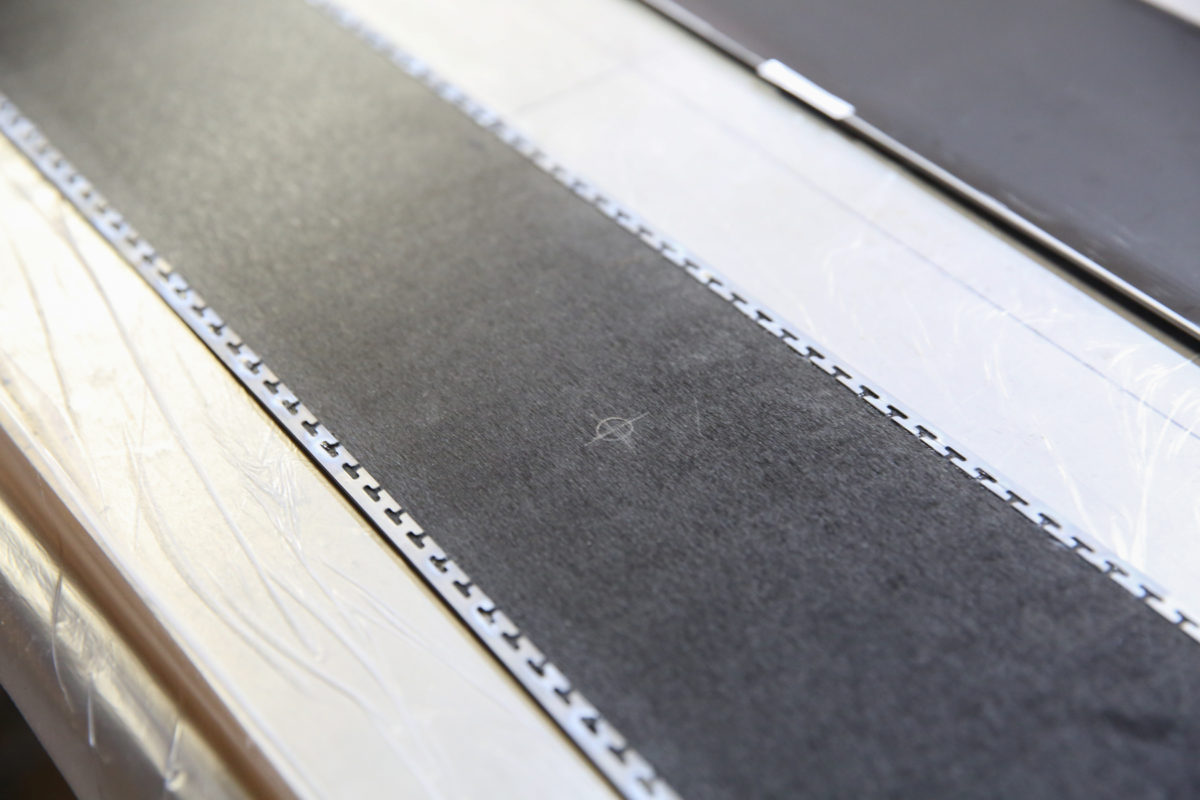
Apply resin on top and layer fiberglass. By the way, "resin" means "epoxy resin". Men are not familiar with it, but it is often used for women's nail art. The resin used this time is a two-liquid type that mixes the main agent and the hardener. This will stick and harden over time.
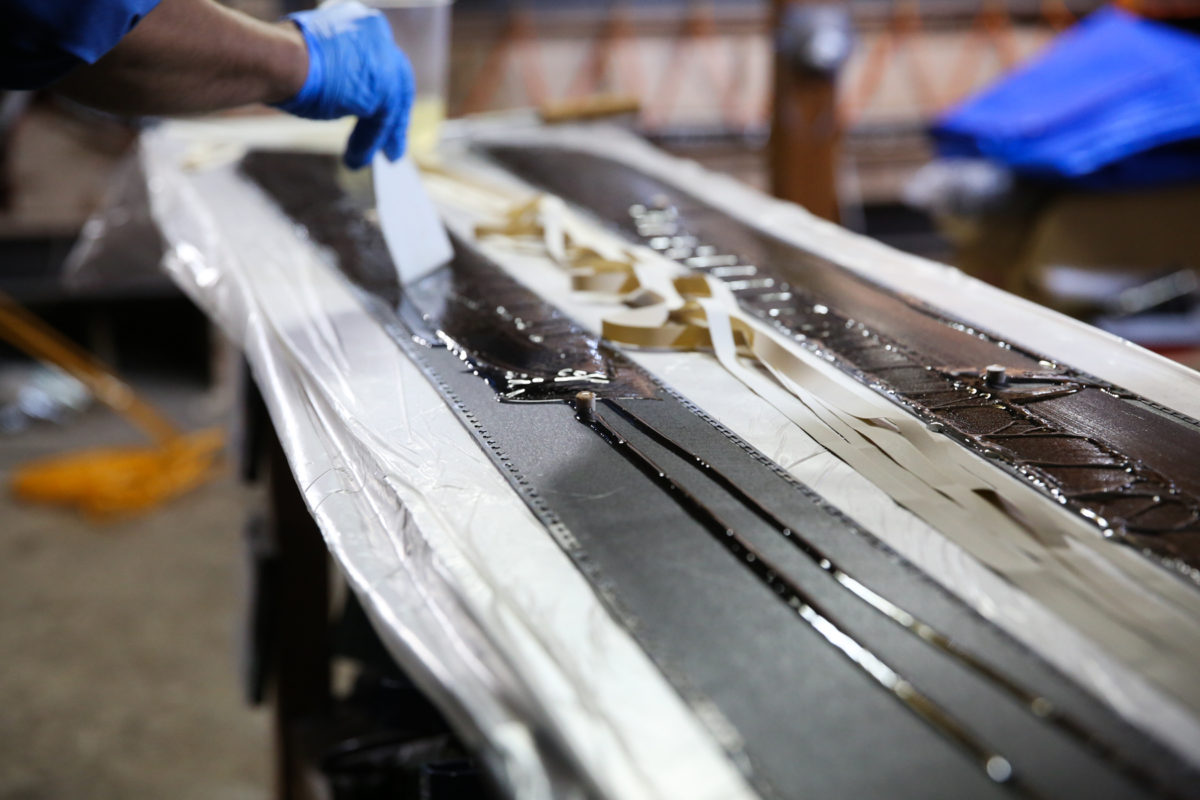
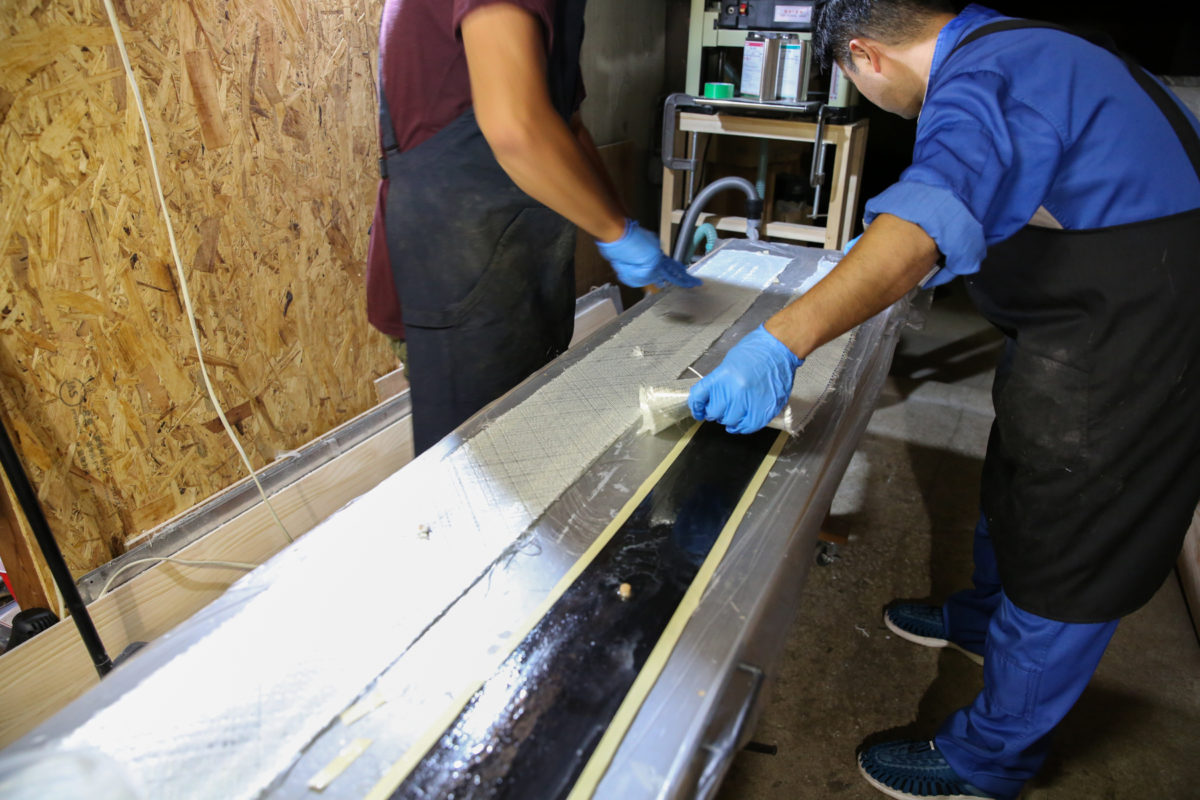
After evenly applying the resin, layer the core material on top of it. Then apply more resin. Layer fiberglass on top and apply resin. This operation is called lamination.
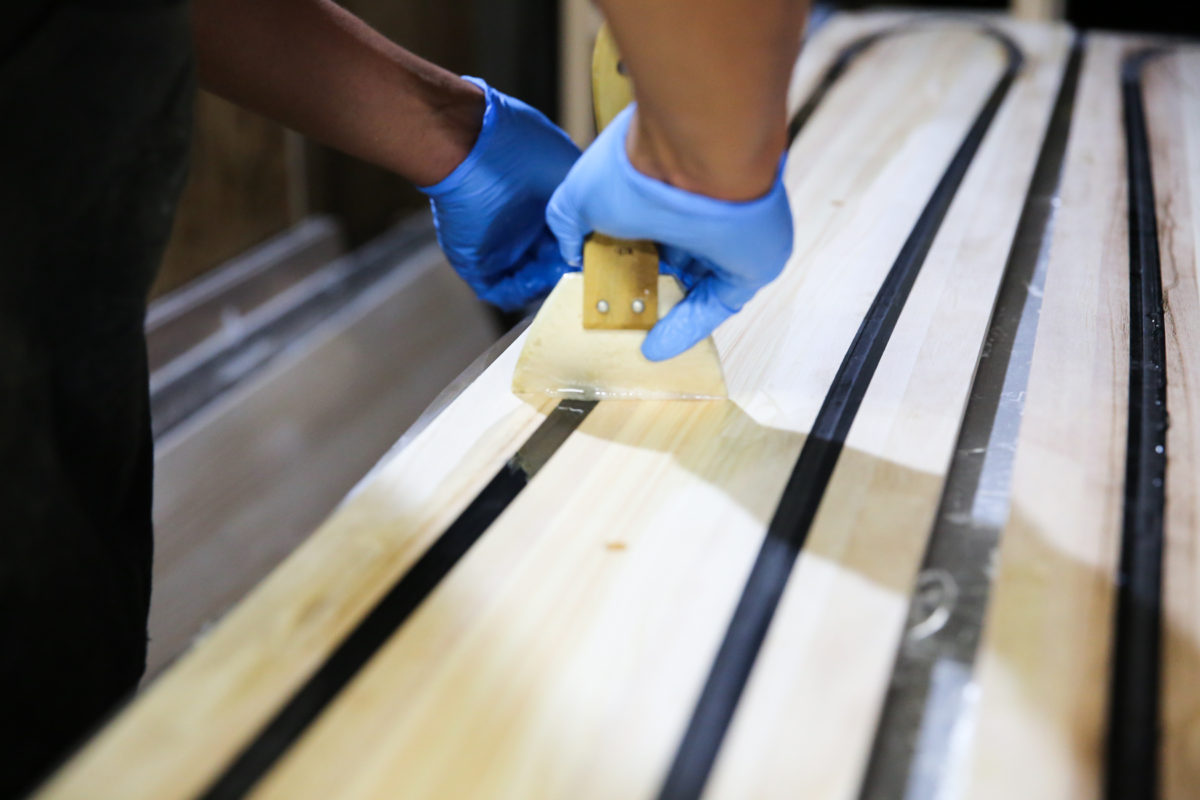
Reinforcing materials such as carbon and titanal can be layered during this fiberglass layering process.
The advantage of the sandwich structure is that it can be pressed even when reinforcing materials are added to increase the thickness. It means that even if you pack a lot of things into it, it will still be a ski.
In making the board this time, I wanted to experience the natural flexibility and hardness of wood as much as possible, so I used only fiberglass as a reinforcing agent. Up until now, I've only ridden skis that incorporate advanced materials, so I wanted to try a board that was close to the natural riding feel of wood. By the way, the fiberglass acts like a spring and creates an appropriate amount of repulsion on the board. The brand basically puts two pieces above and below the core material, but depending on your preference, you don't have to put even this.
Once the second layer of fiberglass is overlaid, place the graphic you just printed on top and then layer the topsheet over it.
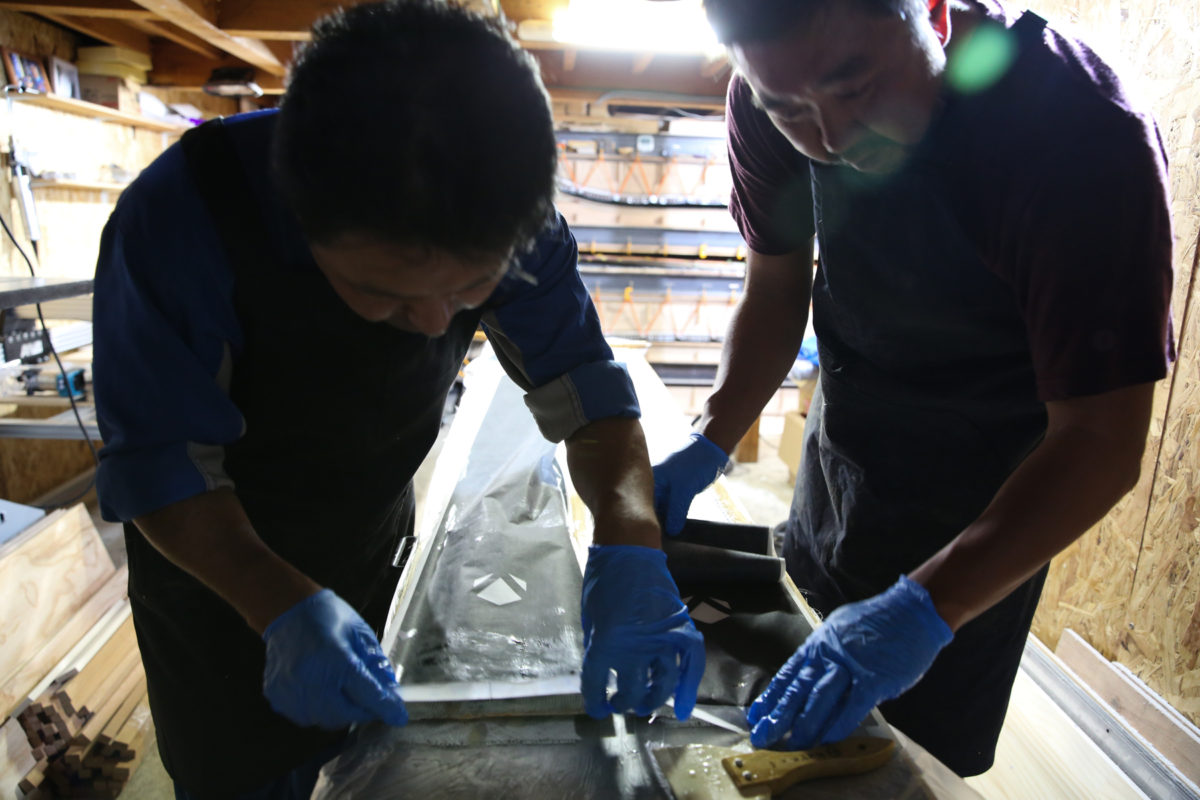
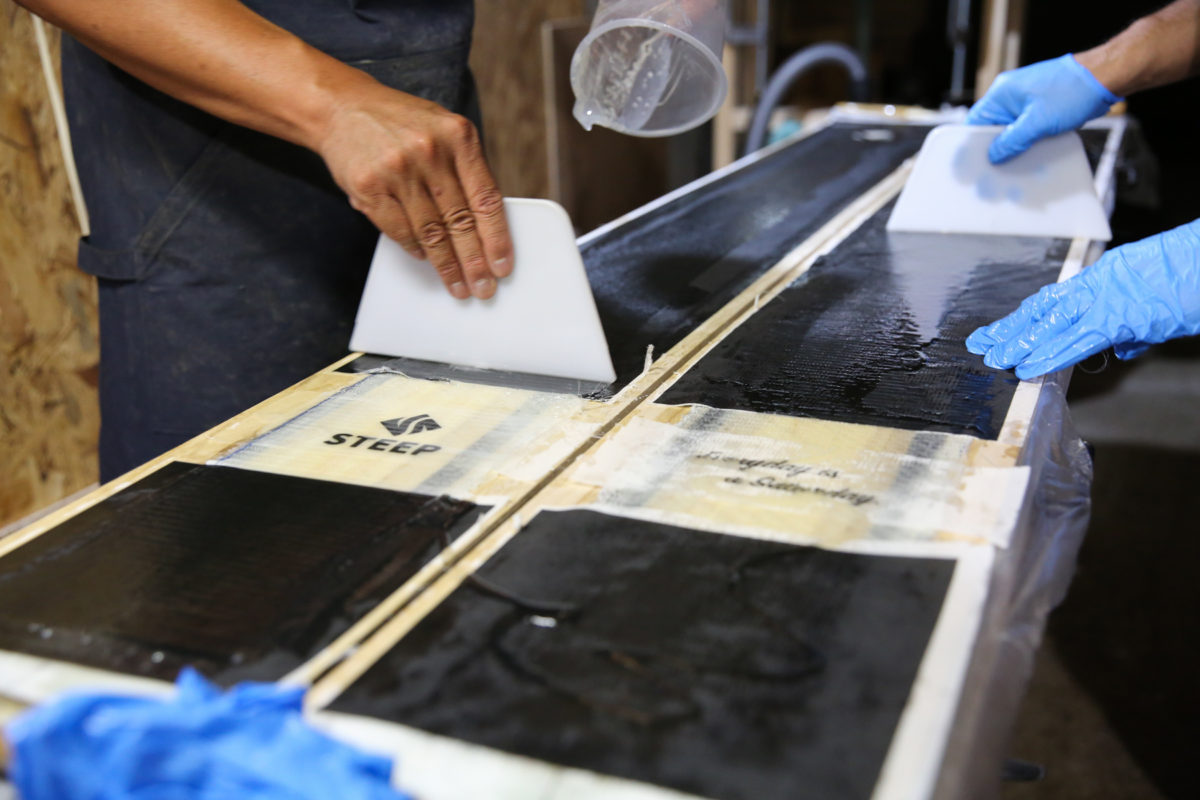
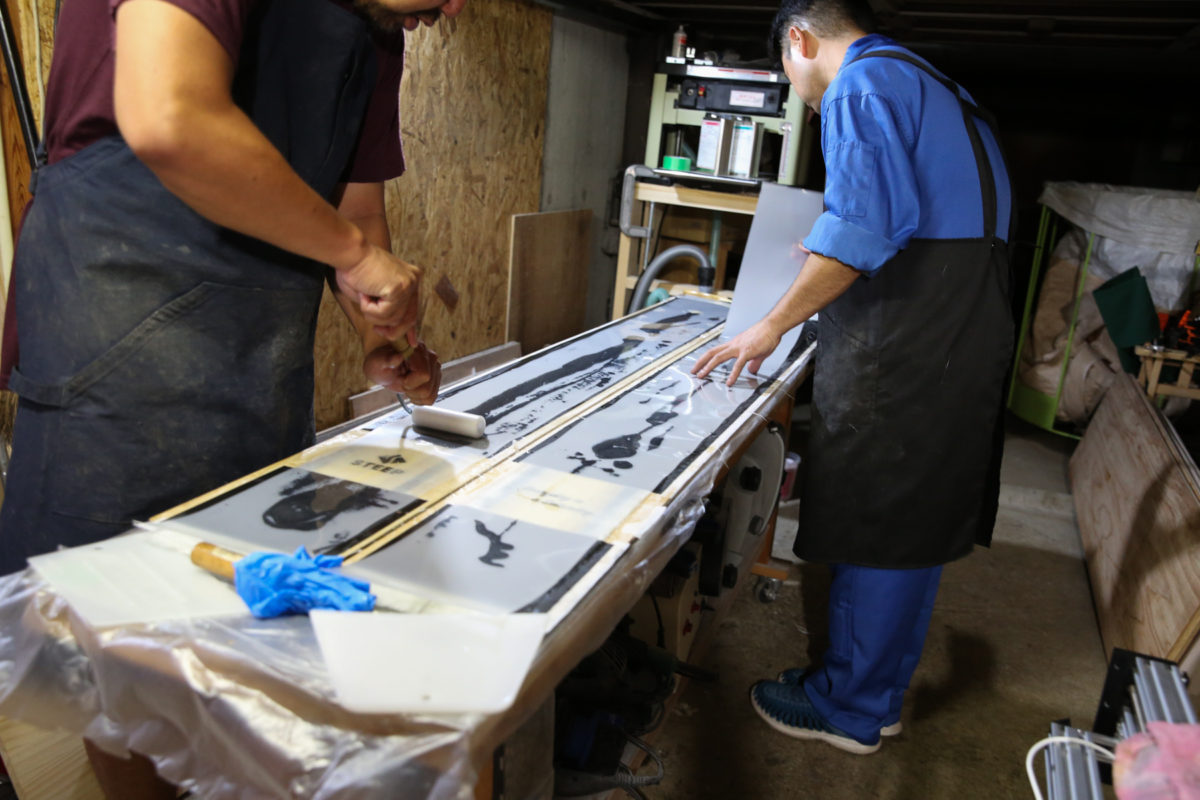
The topsheet has a strong purpose of protection, and does not have a particular functional role related to gliding performance.
Now, once the materials have been layered, it's finally time for the press work.
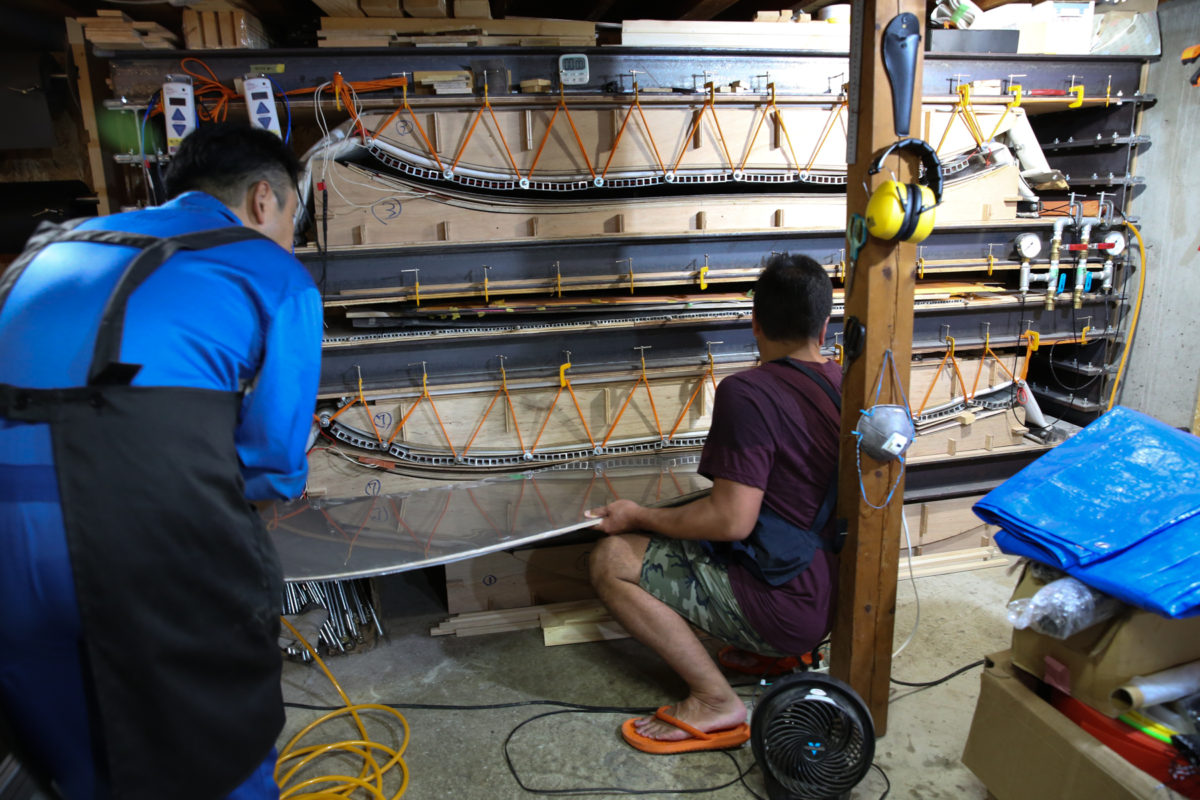
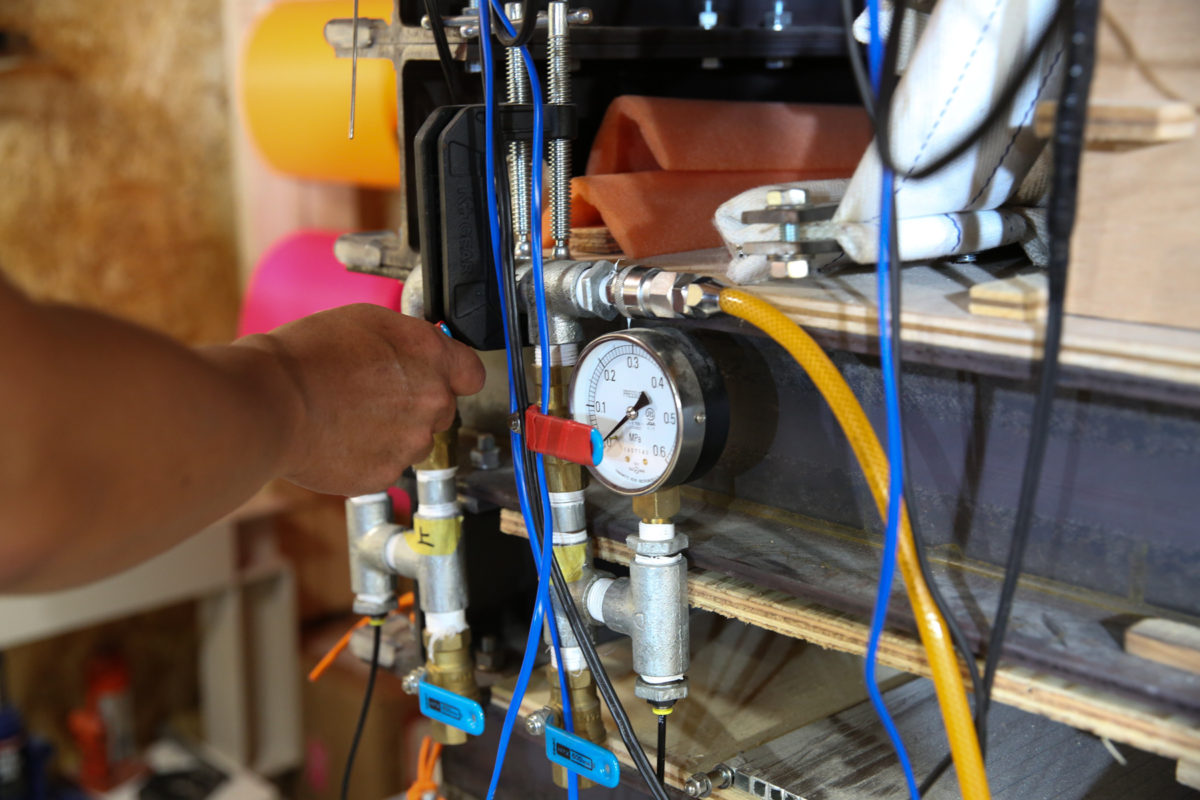
Put it in a press and apply a total pressure of 4 atmospheres and heat of 80 degrees to fix it for about 1 hour. The press work is to glue all the materials together and to create the shape of the camber rocker.
Only one ski in the world is finally unveiled
And this is what came out after cooling for an hour.
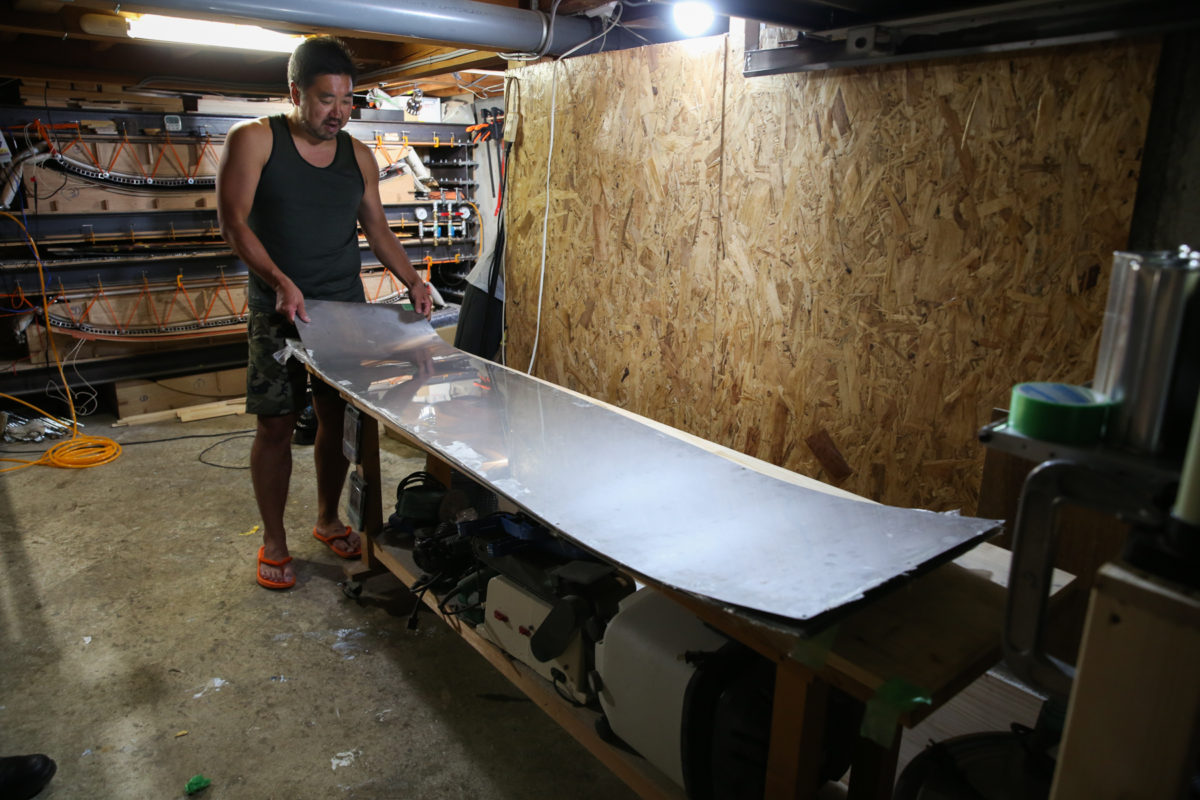
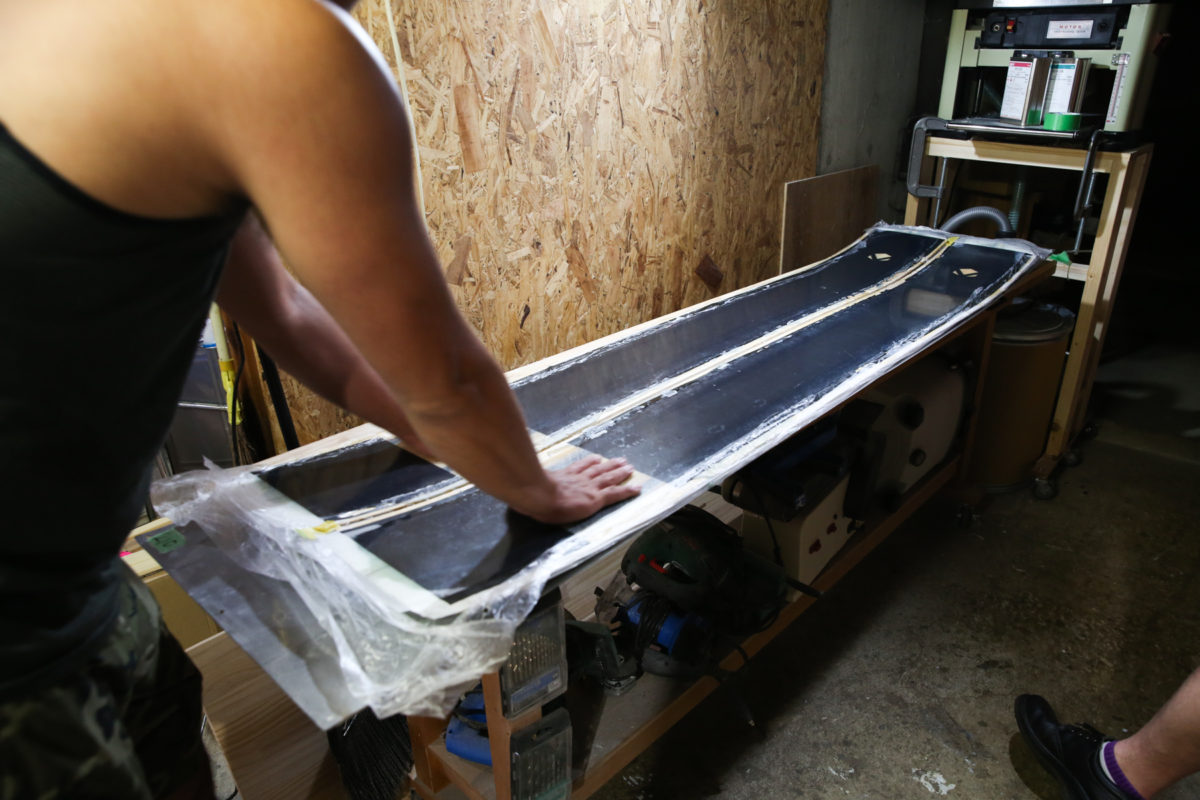
Finally, we came close to the shape of the board. At this point, it's 90% complete. After that, cut out the shape of the ski along the edge.
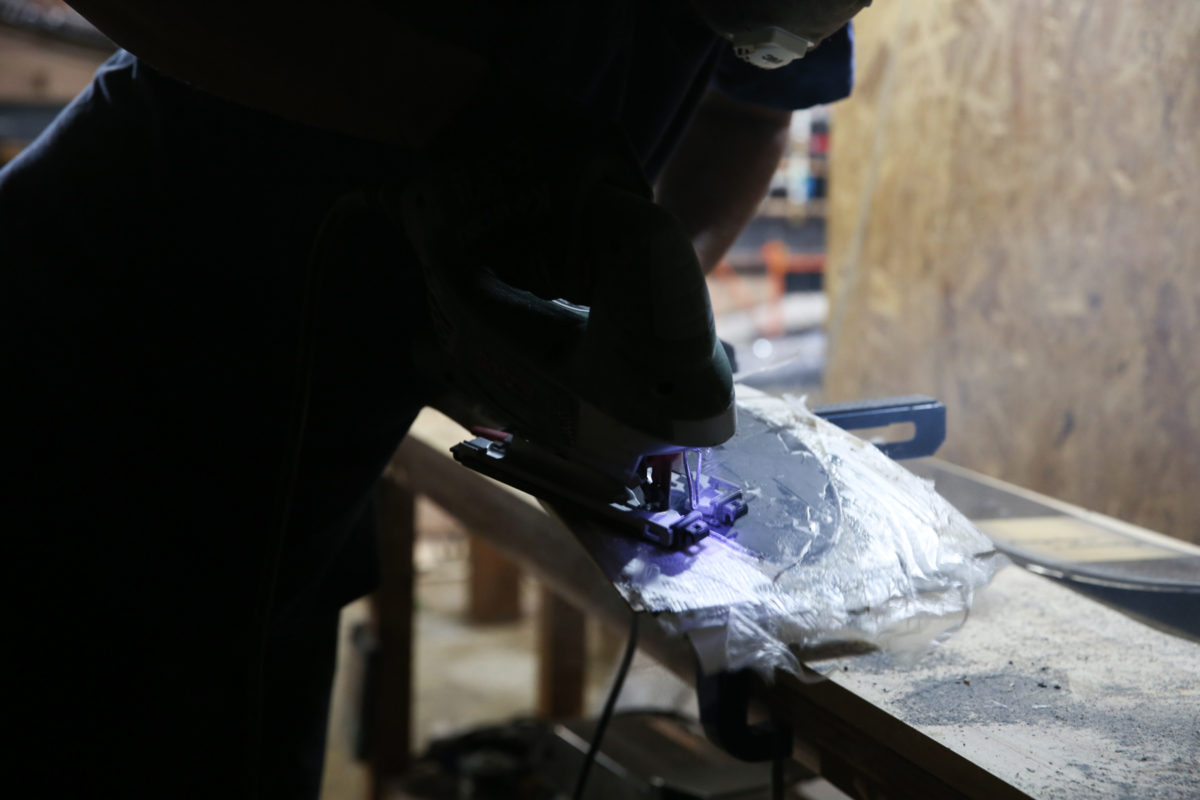
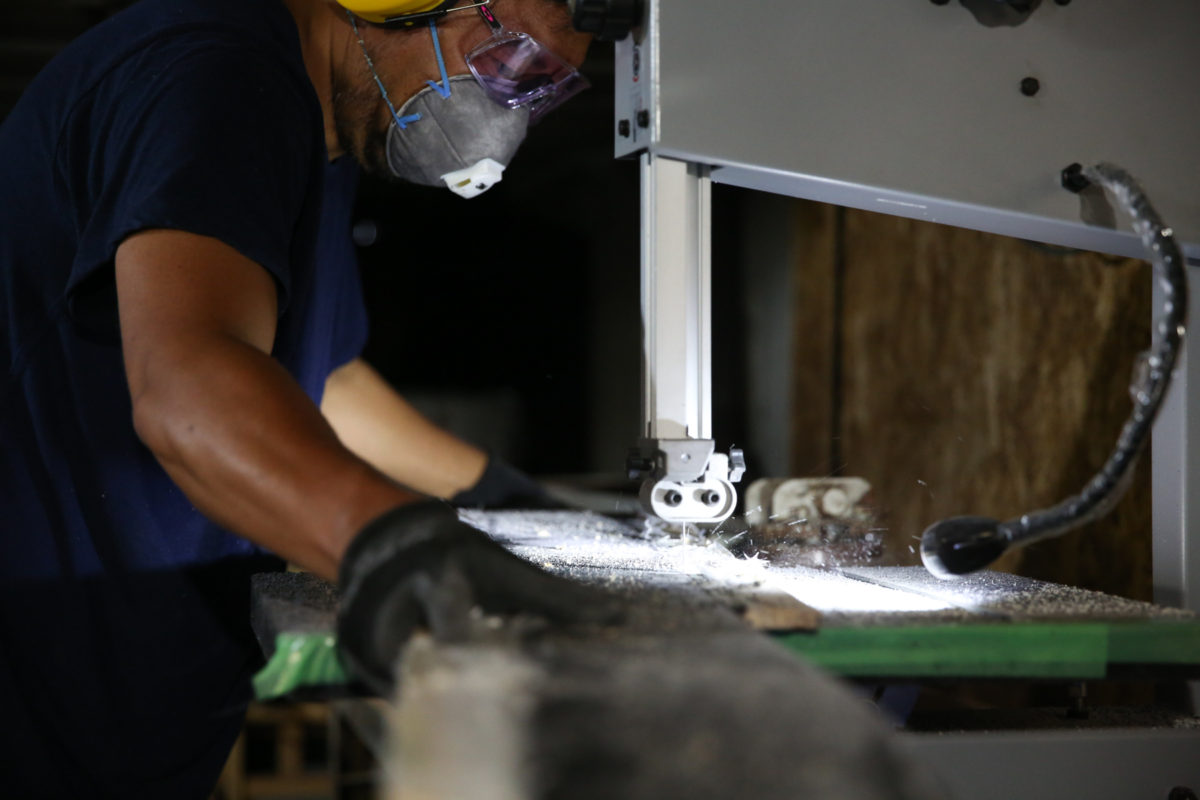
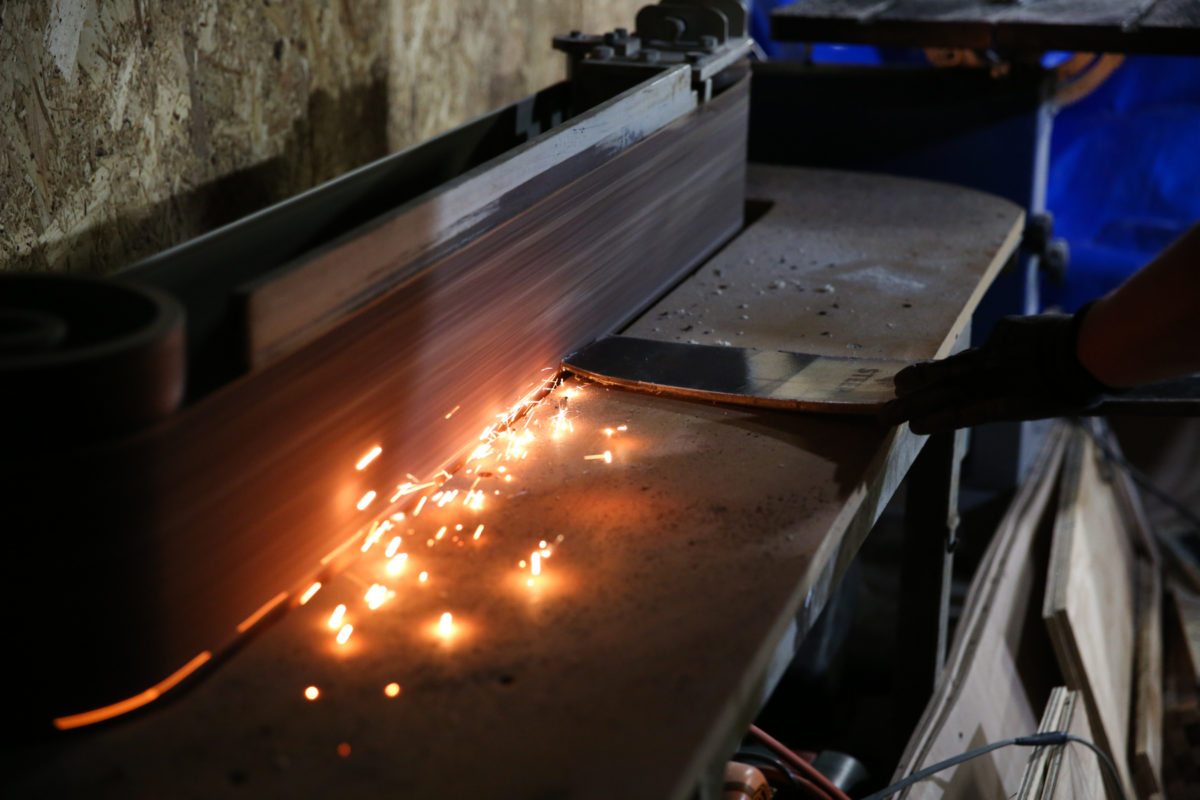
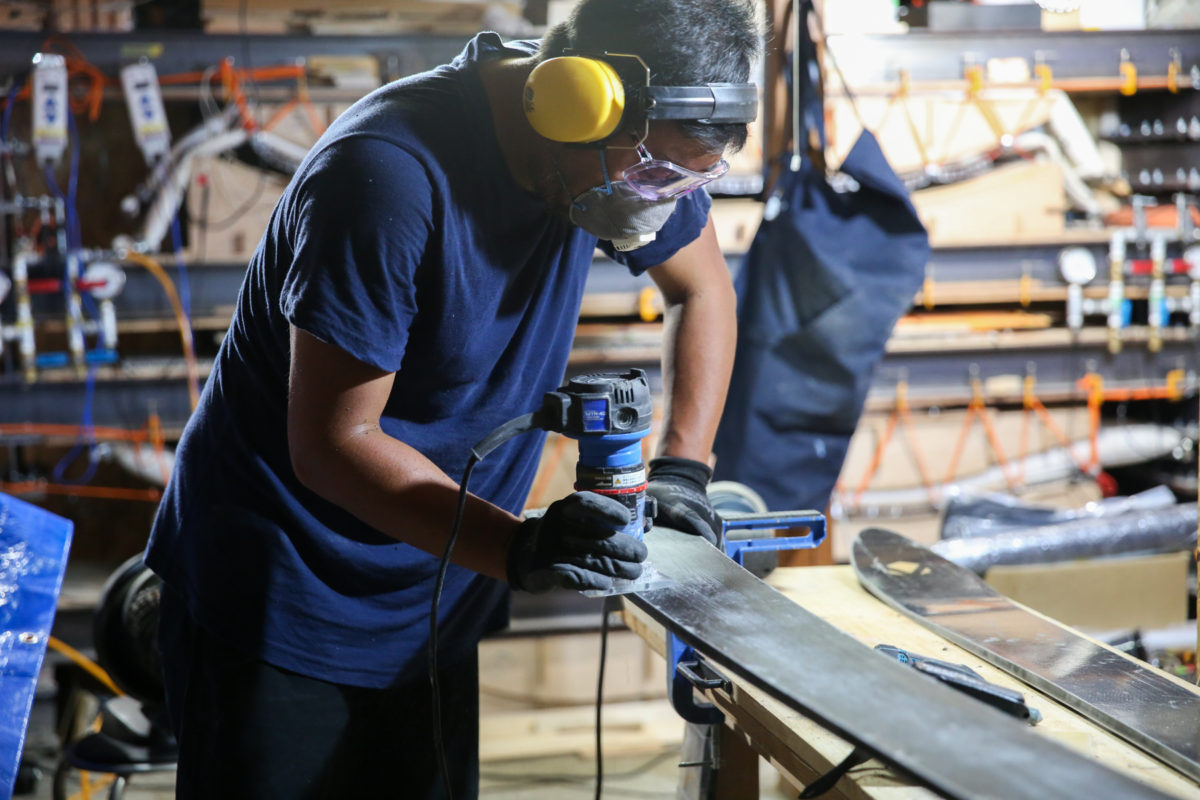
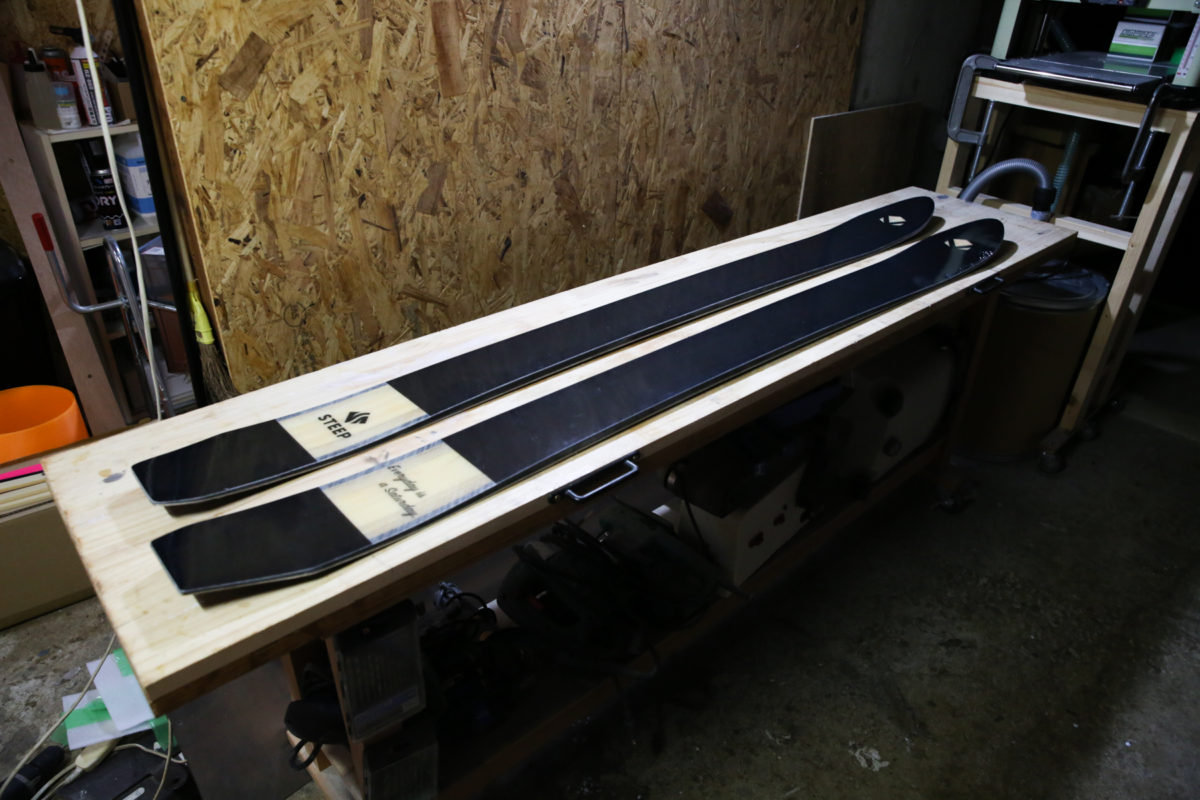
This is my only board in the world so far. Of course, since there is a template, duplication is also possible. You can make it any number of times. Of course, it also meets JIS standards, so it is properly recognized as a product.
When I actually made it and saw it, the real thing was much cooler than what I had drawn in my head.
The more you look at it, the more cool it is. The shape and graphics are so cool that it makes me shiver when I think that it is the only board in the world. Because I designed it myself, I end up looking at it with dark glasses.
Since the board is still soft when it is warm after pressing, it seems that the hardness will settle down after about a week.
In the current situation, I made the board while thinking that it would be nice to have a soft look, but when I put my weight on it and bent it, it gave the impression that it was a little too soft. If this becomes a little more calm and soft to your liking, it's a good letter.
After that, actually ride on the snow and test the ride comfort.
Even though it's only September, I can't wait for winter to come. I will definitely carry this board when the ski resort opens early in November.
I can't help but keep floating...
Well, there is one concern that I realized after actually making the board.
That's the amount of garbage.
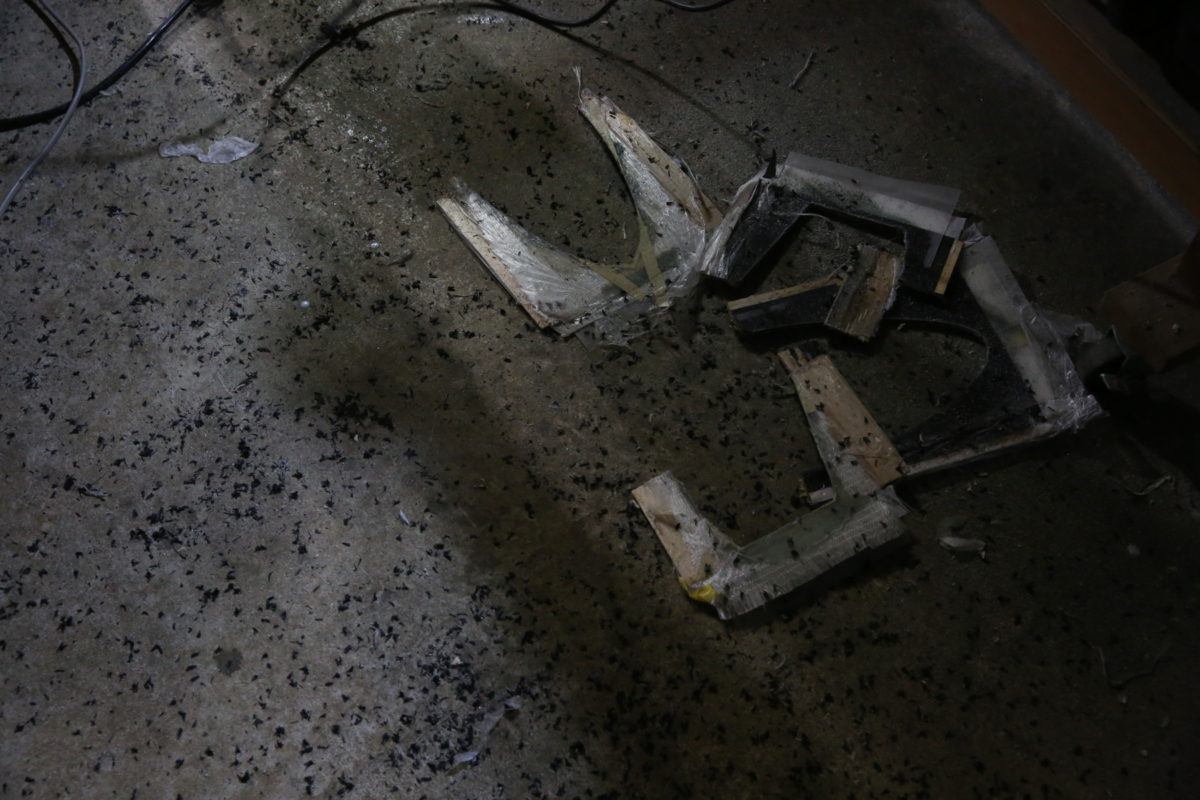
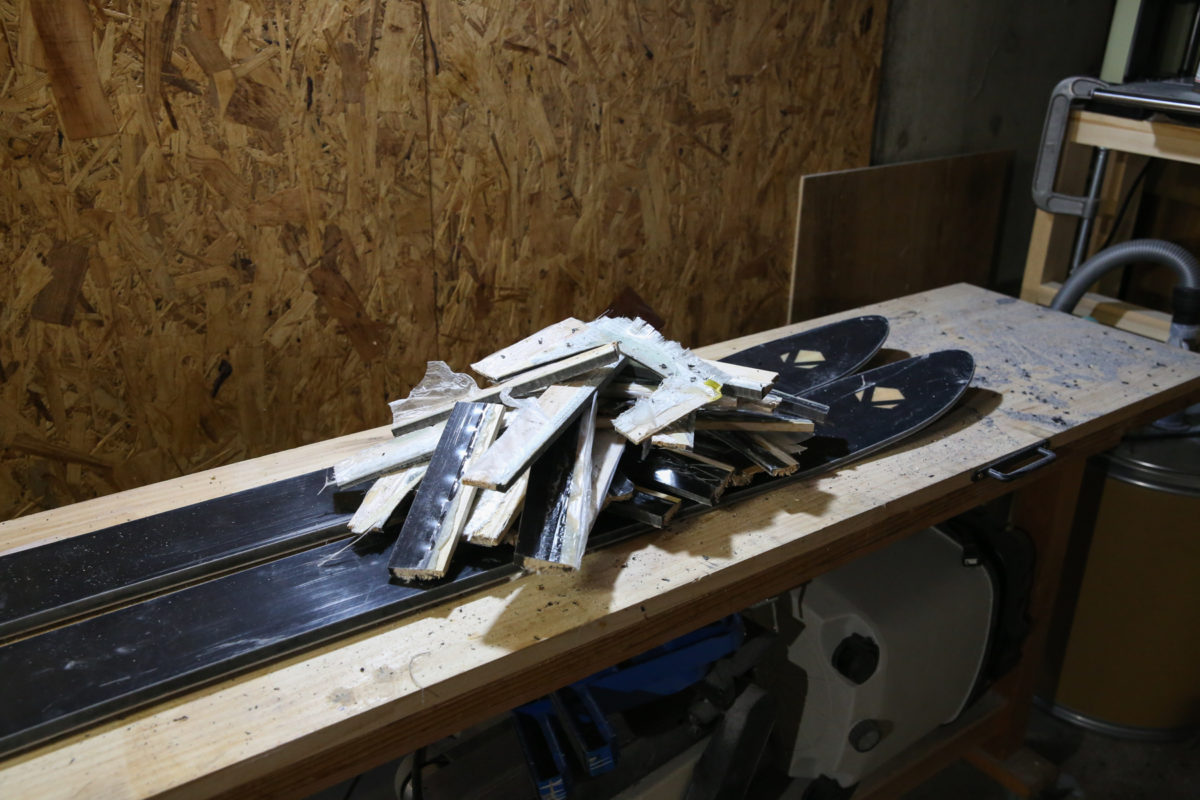
The above photo is only a part of the garbage that came out in the cutting process.
For those of us who are allowed to play in nature, we can't just take out a lot of garbage and slide on the powder without giving up.
As you know, even burning wood as garbage requires transportation and fuel for combustion, which in turn emits greenhouse gases. In addition to wood, it also contains fine metals such as fiberglass, so it must be disposed of as industrial waste.
Mr. Nagai himself says
, "In the future, this garbage problem is one of the things we have to solve
.
Currently, Voltage Design is working on making smartphone cases and accessories from the pieces of wood that are produced when producing boards, but that alone is not enough. He is constantly searching for more effective and drastic solutions.
We have a duty to know. To produce means to consume at the same time. I don't mean to deny consumption, but what do you get in return for your activities? Instead of leaving all the problem-solving to others, there will be behaviors that can be changed by thinking about what you know yourself.
This time it was the back side of ski making, but if this was a wear or glove, something else would be consumed.
Making your own one-of-a-kind ski is a skier's greatest happiness, and at the same time, you can know what kind of material, what kind of structure, and what kind of process the ski is made. It was a valuable experience.
Of course, the general public can also make their own one-of-a-kind skis, and get hands-on experience working on-site.
If you have a board that you created yourself, you will feel more satisfied when you are skating. I wonder if I can ride for a long time with attachment.
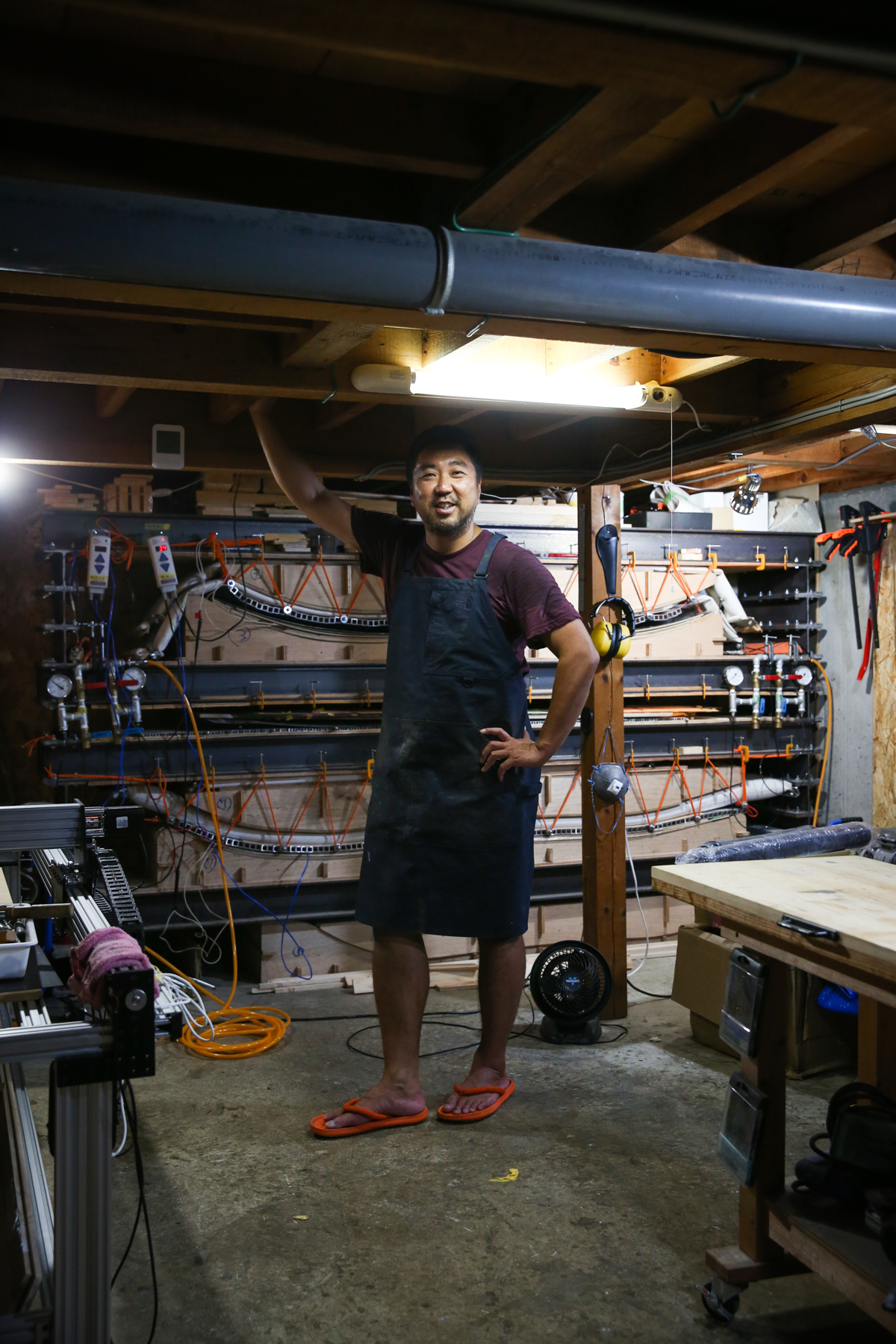
works as a mountain guide in the winter, and works hard to make skis and snowboards day and night in the summer.
Plate development is updated daily, so check Nagai's Instagram for details
・Instagram
・Voltage Design HP
Interviewed and written by Daigo Onozuka
